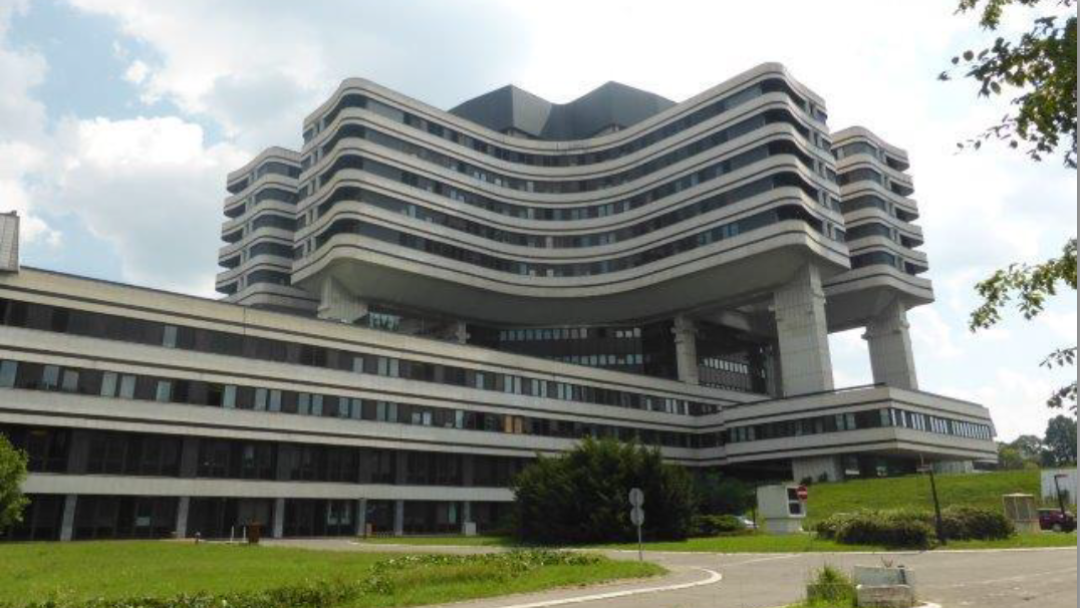News from 2021-02-03 / KfW Development Bank
Serbia's largest hospital is being modernised
New pipes, energy-efficient building cover, nicer rooms

The largest and most important hospital in Serbia is getting on in years. In operation since 1982, it has long since outlived its useful life and now meets today's standards neither structurally nor in terms of energy. In addition, there is the Corona pandemic - a major challenge for the medical sector in Serbia, which can be better managed with modern equipment. For all these reasons, KfW, together with the EU, is financing a complete overhaul of this reference hospital in Belgrade.
A few days ago KfW Development Bank concluded on behalf of the German Federal Government a loan agreement of EUR 50 million with the Serbian Government for this purpose. The EU is participating through the Western Balkans Investment Framework (WBIF) with a grant of EUR 5 million.
Construction is expected to start in 2022 and last several years. The project is considered particularly complex because hospital operations must be maintained during the entire reconstruction phase. After all, the VMA - the abbreviation stands for Medical Military Academy in Serbian - is the largest hospital in Serbia and one of the largest in Europe. It is affiliated with the University of Belgrade and is considered a flagship facility because of its high medical standards. It was originally planned as a military hospital; now 90% of the patients are civilians.
The hospital houses 17 operating theatres and more than 6,000 rooms. A good 1,200 beds are spread over 15 floors and an area of more than 180,000 square metres. More than 25,000 operations take place there every year, and more than 400,000 patients receive outpatient medical care. Given these dimensions, it is clear that there can be no interruption in medical care. Accordingly, the reconstruction is complicated and takes longer than other modernisation measures.
In addition to rooms and sanitary facilities, it is above all the technical equipment of the buildings that is no longer up to date: for example, the electrical wiring, the heating and cooling system as well as their pumping systems have to be exchanged and replaced. Fire protection is also considered outdated. The roof, the exterior façade and the windows also leave a great deal to be desired. Moreover, the insulation is no longer up to the latest standards. A comprehensive renovation will not only make hospital operations run more smoothly, but the more modern facilities will also save energy and water, and thus costs.
As with many buildings in Serbia, the VMA's energy balance in its current state is not particularly favourable. In general, the building stock in the Western Balkans is very outdated, most of the houses were built more than 50 years ago. As a result, the total energy intensity is four times and the CO² emissions six times as high as the average in the EU countries. So far, the VMA itself needs about twice as much electricity as a medium-sized German hospital, 2.5 times more heat and 5 times more water.
The savings effect is correspondingly large, because hospitals work 24 hours a day, all year round: the modernisation of other public buildings in Serbia, for example, has already more than halved energy consumption; similarly high values can be expected for the VMA. This will save costs in the long run; in addition, the working atmosphere for the medical staff will be better, the overall comfort will be higher, and patients will feel more comfortable. Recently, there had been repeated complaints about cold rooms and an unpleasant indoor climate.
Rüdiger Hartmann, Head of KfW’s Belgrade Office, said at the signing of the contract in Belgrade: "The project combines better medical care with energy efficiency measures and thus serves the two greatest challenges of our time, health and climate protection."

Share page
To share the content of this page with your network, click on one of the icons below.
Note on data protection: When you share content, your personal data is transferred to the selected network.
Data protection
Alternatively, you can also copy the short link: https://www.kfw-entwicklungsbank.de/s/enzBWrMC.CaUA
Copy link Link copied